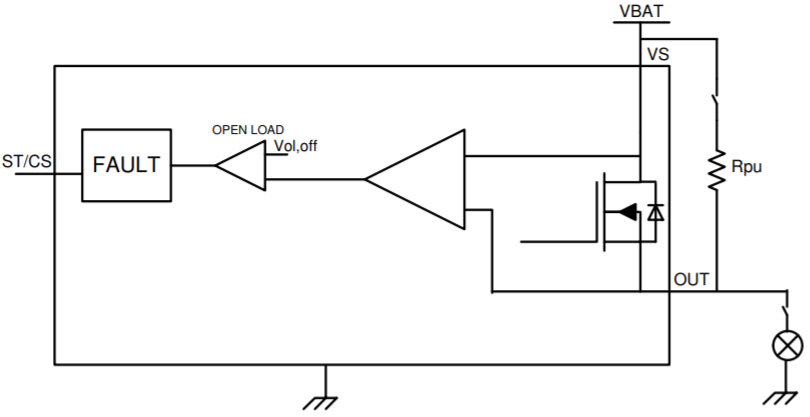SLVAEX0 October 2020 TPS1H000-Q1 , TPS1H100-Q1 , TPS1H200A-Q1 , TPS1HA08-Q1 , TPS1HB16-Q1 , TPS1HB50-Q1 , TPS2HB16-Q1 , TPS2HB50-Q1 , TPS4H000-Q1 , TPS4H160-Q1
3.3 Short to Battery Fault
The short-to-battery fault follows a similar procedure as the open-load fault. A short-to-battery occurs when the output of the high side switch becomes shorted with the supply, VS. The device determines a fault has occurred by first comparing the current with a specified value IOL,ON and if the current is less than that value, the device detects either a short-to-battery fault or an open load fault.
To distinguish this fault, when the supply is in enabled, the output current is less than the specified device’s open load current IOL,ON. The way to determine which fault is occurring is to add a weak pull up resistor and a small switch between VS and VOUT as shown in Figure 3-2. When the switch is disabled, the pullup resistor is present and the load is present, all of the voltage should be dropped across the pullup resistor meaning that VOUT would be low. However, in a fault condition, the output could remain high. To determine if this fault is either a short to battery or an open load condition, the small switch in series with the pullup resistor should be disabled. If there is an open load condition the output will go low and the fault signal will be removed since there is nothing to pull VOUT up to VS. However, if the fault does not go away when the pullup is removed, it is safe to assume that there is a short to battery event occurring.
